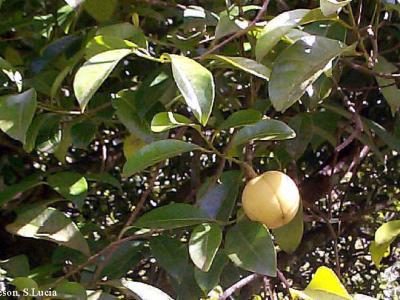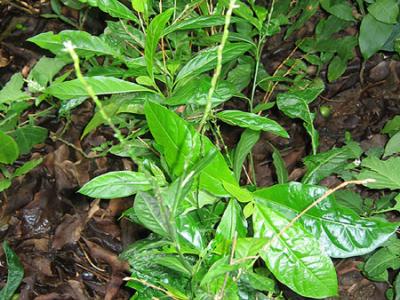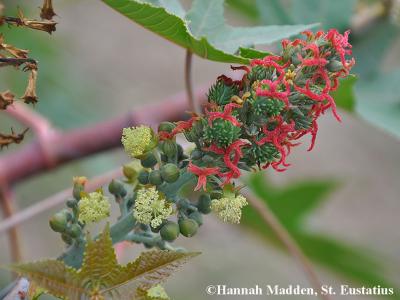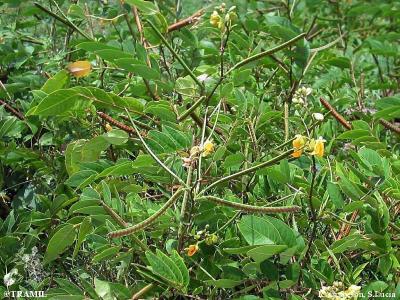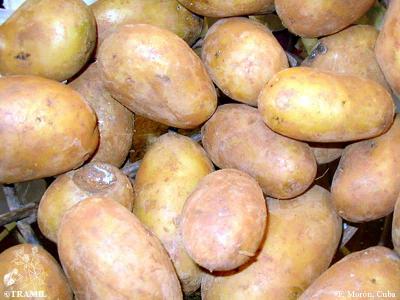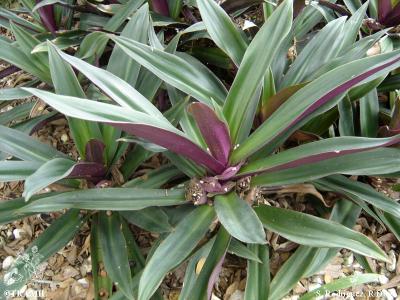(In territories with significant traditional TRAMIL use)
Dominican Republic:
- nuez moscada
Dominica:
- nutmeg
Saint Lucia:
- nutmeg
nutmeg, grated, cataplasm1
According to published and other information:
Use for headache and pneumonia is classified as REC, based on the significant traditional use (OMS/WHO)4 documented in the TRAMIL surveys.
Should there be a notable worsening of the patient’s condition, or should headache last more than 3 days or pneumonia more than 5 days, seek medical attention.
Not for use during pregnancy, during lactation or by children under 3 years old.
There is no available information in scientific literature to validate the effects attributed to nutmeg powder for juma (vertigo and weakness).
For adults, do not take more than 500 mg of nutmeg powder per day.
The nut of Myristica fragrans is widely used for human consumption.
TRAMIL Research25
For headache and pneumopathy:
Grate seed (nutmeg powder) and apply 3-5 grams locally on forehead and 10-15 grams on chest and back.
For juma (vertigo and weakness):
There is no available information establishing a means of preparation and dosage other than that referred to by traditional use.
Any medicinal preparation must be preserved cold and used within the 24 hours.
1 GERMOSEN-ROBINEAU L, GERONIMO M, AMPARO C, 1984
Encuesta TRAMIL. enda-caribe, Santo Domingo, Rep. Dominicana.
2 JEAN-PIERRE L, 1988
TRAMIL survey. St. Lucia national herbarium, Castries, St Lucia.
3 CHARLES C, 1988
TRAMIL survey. Movement for Cultural Awareness MCA, Roseau, Dominica.
4 NUÑEZ MELENDEZ E, 1964
Plantas medicinales de Puerto Rico. Río Piedras, Puerto Rico: Univ. of Puerto Rico - Est. Exper. Agricola, 245.
5 SCHENK H, LAMPARSKY D, 1981
Analysis of nutmeg oil using chromatographic methods. J Chromatogr 204(1):391-395.
6 JANSSEN AM, CHIN NLJ, SCHEFFER JJC, BAERHEIM-SVENDSEN A, 1980
Screening for antimicrobial activity of some essential oils by the agar overlay technique. PharmWeekbl (Sci Ed) 8(6):289-292.
7 SUSUKI H, HARADA M, 1990
Identification of nutmeg by thin-layer chromatography and its introduction to Japanese standards for nonpharmacopoeial crude drugs. Eisei Shikensho Hokoku 108:98-100.
8 ORABI KY, MOSSA JS, EL-FERALY FS, 1991
Isolation and characterization of two antimicrobial agents from mace (Myristica fragans). J Nat Prod 54(3):856-859.
9 MATSUMOTO A, MATSUMOTO T, TOKUDA H, 1991
Lignans from mace as neoplasm inhibitors. Patent Japan Kokai Tokkio Koho, 03,287, 527.
10 HOSTETTMANN K, LEA P (Eds.), 1987
Biologically Active Natural Products. Oxford, England: Oxford Science Publications.
11 DUKE JA, ATCHLEY AA, 1986
Handbook of proximate analysis tables of higher plants. Boca Raton, USA: CRC Press. p112.
12 OZAKI Y, SOEDIGDO S, WATTIMENA YR, SUGANDA AG, 1989
Antiinflammatory effect of mace, aril of Myristica fragans Houtt and its active principles. Jpn J Pharmacol 49(2):155-163.
13 ICHIKAWA K, KINOSHITA T, SANKAWA U, 1989
The screening of Chinese crude drugs for Ca2+ antagonist activity: identification of active principles from the aerial part of Pogostemon cablin and the fruits of Prunus mume. Chem Pharm Bull 37(2):345-348.
14 WESLEY-HADZIJA B, BOHING P, 1956
Influence of some essential oils on the central nervous system of fish. Ann Pharm Fr 14:283-289.
15 MORII L, 1987
Topical antitussive, expectorant, analgesic and sedative agents. Patent-Japan Kokai Tokkyo Koho 62(59):219.
16 PAZOS L, COTO T, CAIZA F, 2009
Irritación dérmica, dosis repetida en piel sana de conejos, del polvo del fruto de Myristica fragans. Informe TRAMIL. Laboratorio de Ensayos Biológicos, LEBi, Universidad de Costa Rica, San Pedro, Costa Rica.
17 MOKKHASMIT M, SWATDIMONGKOL K, SATRAWAHA P, 1971
Study on toxicity of Thai medicinal plants. Bull Dept Med Sci 12(2/4):36-65.
18 CARR CJ, 1973
Evaluation of the health aspects of nutmeg, mace and their essential oils as food ingredients. US NTIS PB REP PB-266-878:1-17.
19 DUKE J, 1985
Handbook of medicinal herbs. Boca Raton, USA: CRC Press.
20 TRUITT EB, CALLAWAY E, BRAUDE MC, KRANTZ JC, 1961
The pharmacology of myristicin. A contribution to the psychopharmacology of nutmeg. J Neuropsychiatry 2(4):205-210.
21 BARTLETT B, 1911
Nutmeg poisoning. Brit Med J 2:269.
22 JOHNSON J, 1906
Nutmeg poisoning. Brit Med J 2:984.
23 STAGER J, WUTHRICH B, JOHANSSON SG, 1991
Spice allergy in celery-sensitive patients. Allergy 46(6):475-478.
24 CODE OF FEDERAL REGULATIONS, 2002
Food and drugs. Chapter I - Food and drug administration, department of health and human services. Part 182 - Substances generally recognized as safe. Sec. 182.10. Spices and other natural seasonings and flavorings. U.S. Government Printing Office via GPO Access, USA. 21(3):451-452. Feb. 24, 2003, URL: www.accessdata.fda.gov/scripts/cdrh/cfdocs/cfcfr/CFRSearch.cfm?CFRPart=…
25 CARBALLO A, 1995
Cálculo de concentración y dosis de las drogas vegetales TRAMIL: Mensuraciones farmacognósticas y aproximaciones técnico-clínicas. Laboratorio provincial de producción de medicamentos, Sancti Spiritus, Cuba.


